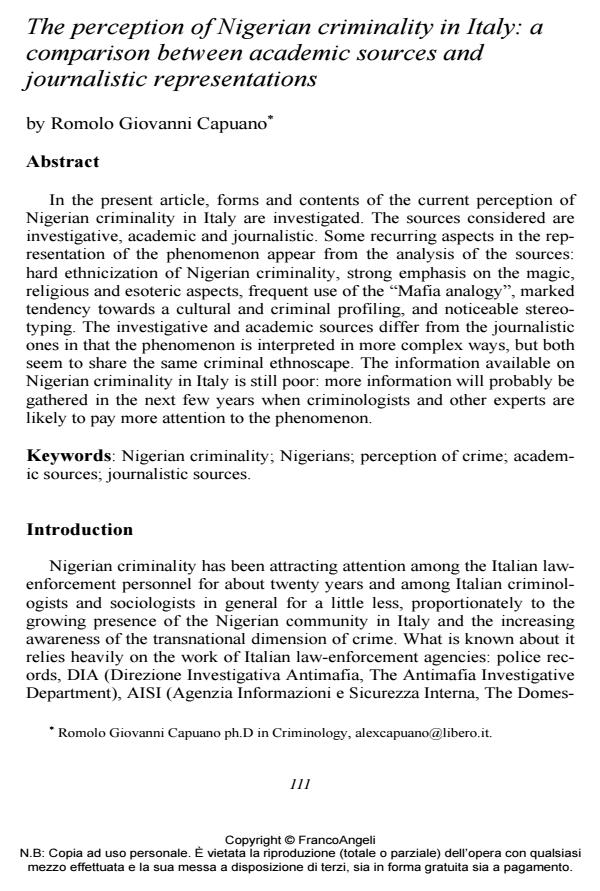The perception of Nigerian criminality in Italy: a comparison between academic sources and journalistic representations
Titolo Rivista SICUREZZA E SCIENZE SOCIALI
Autori/Curatori Romolo Giovanni Capuano
Anno di pubblicazione 2014 Fascicolo 2013/3EN
Lingua Inglese Numero pagine 20 P. 111-130 Dimensione file 676 KB
DOI 10.3280/SISS2013-003008EN
Il DOI è il codice a barre della proprietà intellettuale: per saperne di più
clicca qui
Qui sotto puoi vedere in anteprima la prima pagina di questo articolo.
Se questo articolo ti interessa, lo puoi acquistare (e scaricare in formato pdf) seguendo le facili indicazioni per acquistare il download credit. Acquista Download Credits per scaricare questo Articolo in formato PDF

FrancoAngeli è membro della Publishers International Linking Association, Inc (PILA)associazione indipendente e non profit per facilitare (attraverso i servizi tecnologici implementati da CrossRef.org) l’accesso degli studiosi ai contenuti digitali nelle pubblicazioni professionali e scientifiche
In the present article, forms and contents of the current perception of Nigerian criminality in Italy are investigated. The sources considered are investigative, academic and journalistic. Some recurring aspects in the representation of the phenomenon appear from the analysis of the sources: hard ethnicization of Nigerian criminality, strong emphasis on the magic, religious and esoteric aspects, frequent use of the “Mafia analogy”, marked tendency towards a cultural and criminal profiling, and noticeable stereotyping. The investigative and academic sources differ from the journalistic ones in that the phenomenon is interpreted in more complex ways, but both seem to share the same criminal ethnoscape. The information available on Nigerian criminality in Italy is still poor: more information will probably be gathered in the next few years when criminologists and other experts are likely to pay more attention to the phenomenon.
Parole chiave:Nigerian criminality; Nigerians; perception of crime; academic sources; journalistic sources
Romolo Giovanni Capuano, The perception of Nigerian criminality in Italy: a comparison between academic sources and journalistic representations in "SICUREZZA E SCIENZE SOCIALI" 3EN/2013, pp 111-130, DOI: 10.3280/SISS2013-003008EN